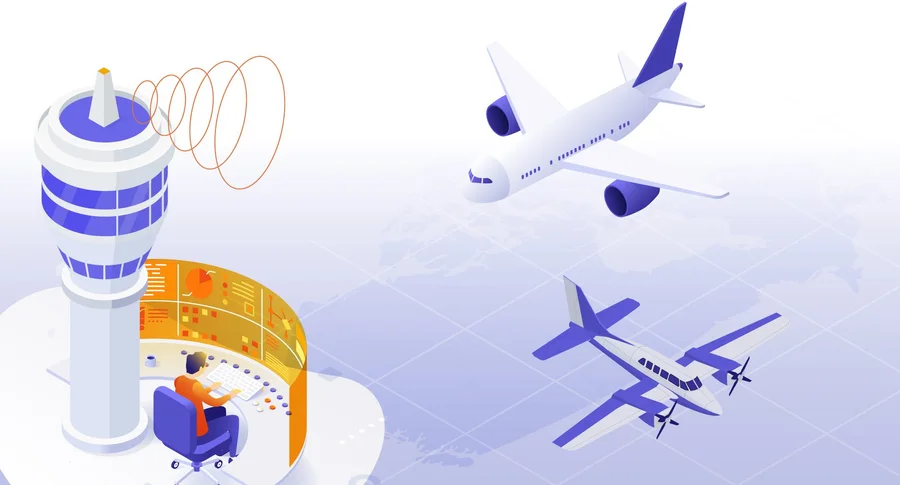Flight Grounding Reveals Airlines’ Telecom Supply Chain Gaps

Flight Grounding Reveals Airlines’ Telecom Supply Chain Gaps
By Libby Hargreaves
IT disruption halts flights for hours, revealing the pressure points in aviation’s telecom infrastructure and the risks that ripple through supply chains.
An outage that grounded Alaska Airlines flights for nearly three hours on 20 July has exposed more than a one-off technical issue.
It brings into sharp focus how deeply aviation depends on reliable telecommunications infrastructure and how vulnerable the entire system becomes when that infrastructure fails.
When systems stop, operations do too Alaska Airlines, one of the largest carriers in the US, brought its entire operation to a standstill on Sunday evening. The cause was an IT outage that swept across its systems. From approximately 8pm Pacific Time, all Alaska and Horizon Air flights were ordered to stop.
“At approximately 8pm. Pacific on Sunday, Alaska Airlines experienced an IT outage that’s impacting our operations,” the airline said in a statement. “We requested a temporary, system-wide ground stop for Alaska and Horizon Air flights until the issue is resolved.”
More than 200 aircraft were affected during the shutdown. By 11pm, Alaska Airlines and the Federal Aviation Administration (FAA) confirmed that flights had resumed. But as every operations manager knows, getting planes off the ground again is only half the battle.
Even once systems are restored, disruption echoes through the airline’s schedule. Flights need repositioning, crews must be rescheduled and resources rebalanced across a network that operates on tight margins.
Alaska Airlines warned passengers to expect continued delays through the night: “We apologise to our guests for this inconvenience. There will be residual impacts to our operation throughout the evening. If you are travelling tonight, please check the status of your flight before leaving for the airport.”
In the hours after service resumed, a spokesperson added: “As we reposition our aircraft and crews, there will most likely be residual impacts to our flights. It will take some time to get our overall operations back to normal.”
Despite the relatively swift resumption, the airline acknowledged the ongoing challenges.
This isn’t simply a story about software failing or systems needing a reboot. It’s a case study in how intertwined telecoms infrastructure has become with aviation logistics, passenger movement and airline revenue.
Every delay adds cost. Every grounded flight disrupts staff hours, gate assignments, catering and baggage handling.
At the core of all this is a fragile reliance on uninterrupted telecommunications. The outage highlights why carriers and their suppliers must treat telecoms resilience as a baseline requirement, not a luxury.
Critical infrastructure such as network failover, backup servers and robust monitoring must be in place to protect against outages. Real-time data flow keeps aircraft moving and passengers informed. When those systems falter, so does the airline’s ability to operate.
Events like this underscore the importance of having strong relationships between airlines and telecoms suppliers. Providers who understand the pressure points of aviation are best placed to build in redundancy and offer effective support during crises. Infrastructure decisions become part of the airline’s supply chain strategy — every router, server and software package now plays a role in flight continuity.
The telecoms industry’s contribution to aviation must be proactive, not reactive. That includes:
Infrastructure redundancy to support failover and ensure uptime
Real-time monitoring to detect faults before they spread
Crisis communications platforms for coordination and transparency
Flexible restoration support from partners with scalable networks
These aren’t optional extras. They are now essential parts of an airline’s operational risk planning.
Supply chain consequences go beyond the airport
Aviation doesn’t operate in isolation. Any disruption affects more than passengers and staff — it ripples across supply chains. Aircraft stuck on the ground delay freight deliveries, disrupt global connections and reduce efficiency in everything from catering to aircraft maintenance schedules.
What the Alaska Airlines incident reveals is how exposed aviation remains to weaknesses in its digital infrastructure – and that exposure is increasing. As carriers become more reliant on cloud-based platforms, remote updates and digital check-in tools, their vulnerability shifts from mechanical failure to system reliability.
This is where telecommunications providers become co-stewards of airline operations. Their role extends far beyond connectivity. They are now partners in risk management, reputation protection and financial performance.
The Alaska Airlines outage is not the first of its kind and it won’t be the last. That said, the message for stakeholders is clear: robust telecoms infrastructure must be treated as critical supply chain infrastructure.
Collaboration, investment and clear responsibility are needed if such incidents are to be contained rather than cascade.
Original Article – https://assets.bizclikmedia.net/668/67c2bf18a54d1ccfad83a9e1e7bc36ed:7cb31ec133323b7c098acbc267d7bad7/aeronautical-service.jpg

